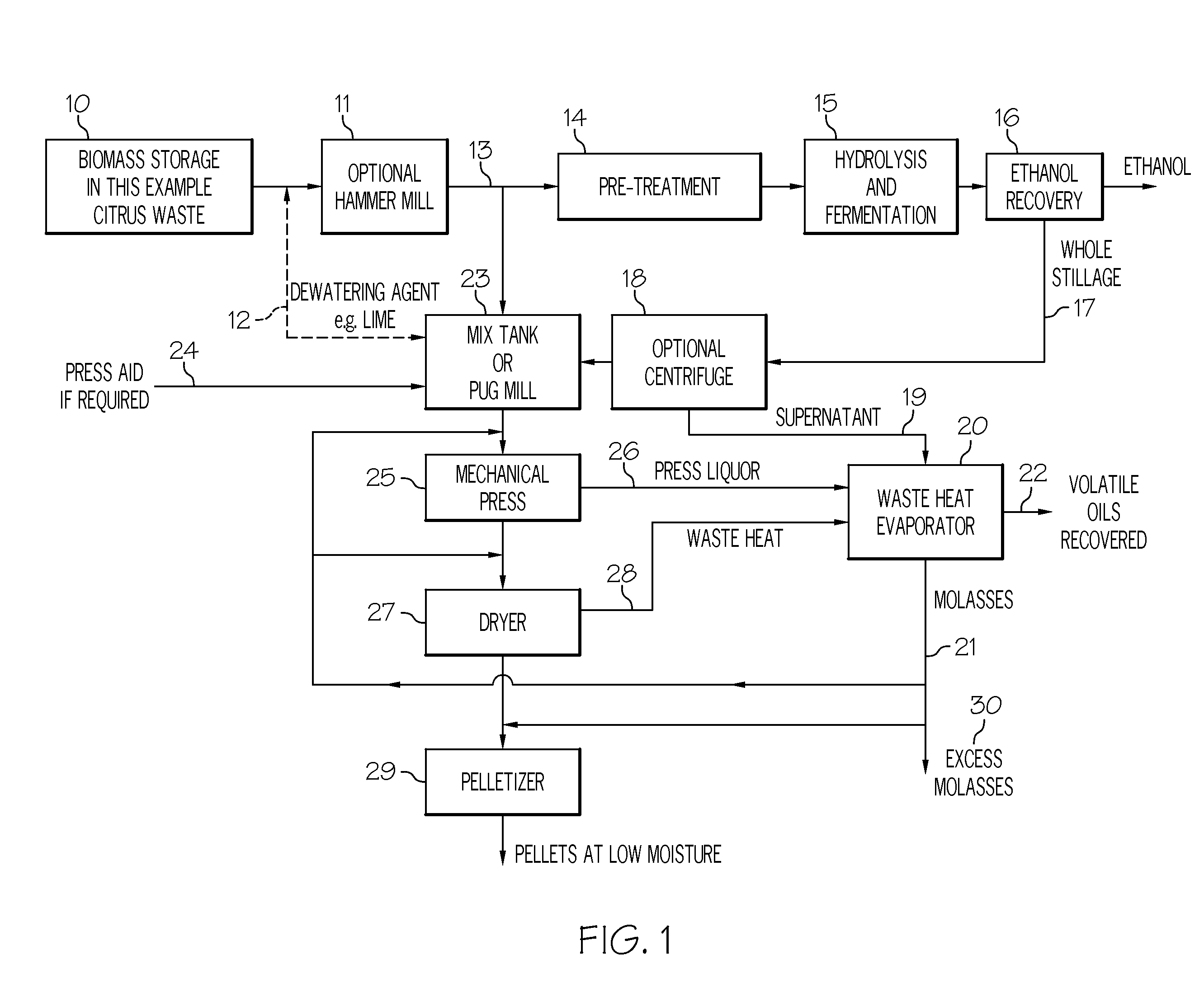Cellulosic ethanol distillers residues
a technology of ethanol distillers and residues, applied in the field of new animal feed and biofuel, can solve the problems of pellets that break into small particles (or dust), are difficult to hold together, and are difficult to manufacture, so as to reduce the amount of vocs
- Summary
- Abstract
- Description
- Claims
- Application Information
AI Technical Summary
Benefits of technology
Problems solved by technology
Method used
Image
Examples
examples
[0064]Citrus waste was subjected to the basic process described generally above. The fermentation residue, distillers peels or whole stillage, was then dried and analyzed.
[0065]Results are shown for the analysis of feed with 10% moisture for: (1) Standard CPP, the feed was made exclusively from unprocessed biomass; (2) Distillers Peels 100%, where the feed is made exclusively from biomass processed to make ethanol; and (3) Distillers Peel 60%, where the feed is made from 60% of biomass processed to make ethanol and 40% unprocessed biomass.
StandardDistillersDistillersCPPPeels 100%Peels 60%Carbohydrate (CHO)63%57%59%Fiber11%10%10%Protein 6% 8% 8%Fat 3% 5% 4%Ash 7%10% 9%Water10%10%10%Total100% 100% 100% CHO + Fiber +83%80%81%Fat + Protein
[0066]There is a minimum degradation in nutritional value as a larger percentage of processed biomass was used in making the feed. The compositional analysis shows that distillers peel made through the invention is of similar nutritional value to Stand...
PUM
 Login to View More
Login to View More Abstract
Description
Claims
Application Information
 Login to View More
Login to View More - R&D
- Intellectual Property
- Life Sciences
- Materials
- Tech Scout
- Unparalleled Data Quality
- Higher Quality Content
- 60% Fewer Hallucinations
Browse by: Latest US Patents, China's latest patents, Technical Efficacy Thesaurus, Application Domain, Technology Topic, Popular Technical Reports.
© 2025 PatSnap. All rights reserved.Legal|Privacy policy|Modern Slavery Act Transparency Statement|Sitemap|About US| Contact US: help@patsnap.com

